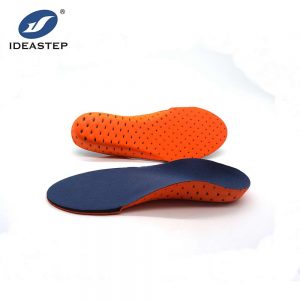
Orthotic insoles may be recommended for children who have specific foot conditions or biomechanical issues that require additional support and correction. Here are some examples of situations where orthotic insoles for kids may be beneficial:
1. Flat Feet
Children with flat feet have little to no arches, which can lead to overpronation (excessive inward rolling of the feet) and potential foot and leg pain. Orthotic insoles can provide arch support and help align the feet properly.
2. High Arches
Some children may have high arches, which can result in poor shock absorption and stability. Orthotic insoles with cushioning and arch support can help distribute pressure more evenly and provide stability.
3. Sever’s Disease
Sever’s disease is a common cause of heel pain in children, usually occurring during periods of rapid growth. Orthotic insoles can help reduce stress on the heel and provide cushioning to alleviate pain.
4. Overpronation
Excessive inward rolling of the feet (overpronation) can lead to imbalances, instability, and potential injuries. Orthotic insoles can help control pronation, improve alignment, and provide stability during walking or sports activities.
5. Sports Injuries
Children who participate in high-impact sports or activities may be prone to certain injuries like shininess or stress fractures. Orthotic insoles with shock-absorbing properties can help reduce the impact on the feet and lower limbs, preventing or alleviating these injuries.
6. Toe Abnormalities
Children with toe deformities like bunions or hammertoes may benefit from orthotic insoles that provide cushioning and support to alleviate pressure and discomfort.
7. Leg Length Discrepancy
If a child has a noticeable difference in leg length, orthotic insoles with a lift or wedge can help equalize the leg lengths and promote proper alignment.
It’s important to note that the decision to use orthotic insoles for children should be made in consultation with a healthcare professional, such as a pediatrician, podiatrist, or orthopedic specialist. They can assess the child’s specific needs, conduct a thorough evaluation, and recommend the most appropriate treatment plan, which may include orthotic insoles if necessary.
Expand more related content: https://www.aideastep.com/kids-insoles/.
